“Okay… let me say this…if I lost my wife and the next day a little bird landed on my window sill, looked me right in the eye, and in plain English said, “Sean, it’s me, Anna, I’m back”…Well, what could I say? I guess I’d believe her. Or I’d want to. But I’d be stuck with a bird. But other than that, no–I’m a man of science. I just don’t believe that mumbo-jumbo. Now, that’s going to have to be the last question. I need to go running before I head home…”
November 29, 2009
It will be interesting to see what contemporary films stand the test of time. One film that I think will most certainly grow in stature is BIRTH, a 2004 film by Jonathan Glazer. Like Hitchcock’s VERTIGO, BIRTH was a failure when it was released, panned by critics and seemingly inaccessible to audiences. Like VERTIGO, it is a film about obsession, about repetition, about projection, about grief. Like VERTIGO, I predict that it will become well-known as the years pass and as more and more people discover it.
I first saw this film on DVD, late one night, not expecting to like it much since the critical and public reception had been so poor. But from its very beginning it hooked me in a way that few films have—a combination of literate screenplay, wonderful acting, exquisite direction, and a glorious score by Alexandre Desplat.
The movie begins with the quote above, a man’s voice speaking over black, seemingly the end of a college lecture. The man describes his love for his wife as that thing which would make him doubt even his scientific principles, the power of love being strong enough to push beyond our logical reasoning.
This is followed by one of the most mesmerizing tracking shots I’ve ever seen—a three minute run through Central Park in the snow. The music that accompanies this shot is stunning, and amounts to what could be considered an overture, setting musical themes and motifs that will continue to build throughout the film.
I asked my friend, and wonderful composer, Tim Jones to dissect this overture for me: “It starts out with a trio of flutes playing the pattern that continues through the piece. The triangle comes in next followed by the celeste. The low, river-like figure is contra bass clarinet and possibly contra bassoon with cellos and basses. The figure is usually punctuated by hits from the gran casa (bass drum). There is a secondary rhythmic figure played by the horns and harp (possibly with higher woodwinds in the background, it’s hard to hear). We then get tutti strings (full-section) playing a sort of halting, interrupted melody. Finally, the violins come in as a section and give us a nice, flowing statement. The horns come in triads, playing a sort of hunting call. The phrase culminates with low brass punctuation (trombones, tuba). Underneath the horn figures are pizzicato strings plucking arpeggios. The trumpets make their first appearance with a very chromatic, sinewy line that plays in and out of the harmony. I notice the timpani has actually been hiding out behind the gran casa. It swells with rolls on the crescendos. The timpani then really comes to the forefront. This section is basses, gran casa and timpani in a complex, rhythmic interplay. The pizz strings start a figure in the violins. All of this is very indicative of the beginnings of a life, the start of the heartbeat. Harp and piano appear for the first time. We’re back to the simplicity of the beginning orchestration, but this time with piano added to the color. Then there is a synth sine wave. This is a very interesting choice, because this is the simplest, most pure form of sound that we hear. If you were to think of the ‘birth’ of sound, the sine wave is a ‘single cell’ organism. It is a simple, building block upon which much sound is constructed (in nature and electronics).”
This prologue, or overture, is in many ways analogous to the life of a man—the music starts out with a very simple, childlike pattern, which becomes increasingly complex, even as the shot itself remains constant: we remain at the same distance from the man, as he continues to run. One could think of the music as the way our thoughts build upon one another in complexity, and yet, like the faceless figure in the snow, we’re all headed towards the same place—certain death. The first cut comes, and we see the man from a distance, descending towards us, down a path in Central Park, as the camera tracks backwards away from him.
He comes to a halt, in a dark underpass, and then collapses, dead of a heart attack. This is followed by a shot of a baby being born underwater, emerging to take his first breath.
The narrative then moves ahead ten years. The plot of the movie proceeds as follows: Anna, played by Nicole Kidman, still grieves the loss of her husband Sean, but finally agrees to marry another man, Joseph. Shortly after their engagement party, a ten-year-old boy shows up and claims to be her dead husband. She gradually comes to believe that the boy is indeed her husband Sean’s reincarnation. That’s really all the plot one needs to know, because the plot is not what’s relevant about the movie. It is instead about the symbols of love, the symbols of loss, and the nature of projection. It uses images to suggest ideas, and it doesn’t try to tie up its loose ends. Is the boy really inhabited by the soul of her dead husband, or is he simply responding to the emotional confusion of Anna? Does it matter? In any case, Anna has a choice to make about the future, and her refusal to let go of the past causes her great suffering.
Dennis Cozzalio wrote the following about BIRTH on his blog: “The movie gains strength with each sequence, lending power and emotion to scenes that are staged with absolute clarity of purpose and none of the grandstanding sentimentality that might turn it into, as one writer thoughtlessly claimed, Ghost with pretensions to art and intellect. It’s much easier to write off a movie like Birth with glib, snarky pronouncements like that than it is to engage with the movie on its level and explore some of the questions it asks: What constitutes identity? Is it something innate in us, or is it something projected onto us by others to which we acclimate ourselves, becoming versions of a vision others have of us?”
I am struck by two very powerful sequences in BIRTH, which I always show to my students when I’m teaching. In the first, Joseph and the boy’s father insist to the boy that he promise not to see or bother Anna again. The boy adamantly refuses. Anna also then tells him, quite forcefully, that she doesn’t want him to bother her again. As she starts to walk away from him, she looks back and sees the boy collapse. This unnerves her, as it is reminiscent of her husband’s collapse in the park.
This is followed by a four-minute shot of Anna arriving at the opera and falling deep into her thoughts about what she has just witnessed. It’s as though we witness her every changing thought—Nicole Kidman is tremendous in this sequence.
Her look back over her shoulder to the boy evokes the Orpheus myth. The music that plays is Wagner, and as Robert Cumbow points out in his essay on BIRTH: “In that marvelous long take of Anna’s face, we hear almost the entire Prologue to Act I of Die Walküre. If it went on much longer, we would have heard the singing begin, as the exhausted Siegmund stumbles into the forest home of Hunding. This is important for two reasons: Siegmund’s arrival at Hunding’s home ends up breaking up the marriage of Hunding and his wife Sieglinde, as the boy Sean almost does with Anna and Joseph’s engagement. Second, Siegmund not only steals Sieglinde from Hunding, but beds her, even though she is his long lost sister—thus consummating a “forbidden” love, like Anna’s love for the 10-year-old boy who might be her long-lost husband.”
The second sequence that has great meaning for me takes place shortly after. The boy calls and leaves a message for Anna on an answering machine in the family apartment, telling Anna to meet him in the park, that she’ll know where. The camera slowly dollies into Anna’s mother Eleanor, played by Lauren Bacall, as she listens to the message.
This cuts to a locked-off shot of Anna and Eleanor eating lunch, the sound of their silverware clanking against the plates, as the mother relays the message. The shot is perfectly still, but the music is building in intensity, reflecting Anna’s emotional response to the boy’s message, though she betrays no sense of this emotion in her demeanor.
This cuts to a shot of her running down the sidewalk of a Manhattan street, as the music opens up in a romantic and dramatic reprise of the theme established in the overture.
Then we cut to Anna standing immobile at the edge of the park, as the childlike quality of the initial musical theme recurs—suggesting her thought process–perhaps she’s thinking, “…but he’s just a child.”
Then the power of the lower chords starts to emerge again, as she slowly moves forward, with determination and hope, retracing her dead husband’s run down the Central Park path. She approaches the underpass where he died, and the boy emerges from the shadows to meet her.
It is a wrenching and moving sequence. The music is used beautifully to illustrate the expanse of Anna’s emotions. It tracks the psychological line of the story as well as any film score I’ve ever heard.
The slow dolly into Eleanor, as she listens to the phone message, reflects her fear and puzzlement. This shot also moves me because, every time Eleanor appears, there is the implication that her own death is on her mind. There was a wonderful exchange between the mother and the boy in the shooting script, which was ultimately cut out of the film, but which nevertheless informs Lauren Bacall’s performance:
ELEANOR: What’s it like to be dead? (pause) There’s just that little thing in the back of my head that’s just a little bit worried. And it says I hope I’m ready for this. I hope I’m prepared. So if there is something I should know then I want you to tell me right now. Anything. Doesn’t matter. Or is there nothing to worry about?
SEAN: I’m a liar.
ELEANOR: Pretend.
SEAN: Once I died, I couldn’t see anything. I didn’t hear anything. I didn’t feel anything. And that was it. It was over.
ELEANOR: Then how did you end up here again?
SEAN: I don’t know. I just did.
Richard Armstrong, in another excellent article about BIRTH, writes, “Charting the emotional consequences of a widow’s adjustment to loss and a new life with a new husband, it is rare for a mainstream film to be about grief, rather than to act as a palliative for it. It is customary for a Hollywood film to revolve around romantic love, but rare for one to be so analytical about what love is, or can be, about the relationship between identity and desire.” Among many other interesting references and comparisons, Armstrong’s commentary points out how the feeling of the film is more important than the specifics of the plot. He suggests some of the early images in BIRTH are reminiscent of a séance.
Jonathan Glazer himself has suggested that its mystical aura has all the makings of a fairy tale. Central Park feels like an enchanted wood; Clara (played by Anne Heche, in a terrific performance) seems almost like a wicked step-sister (her hands are dirty; and she and her husband are distinctly working-class, contrasted with the elite world of Anna’s family and friends); at the climax of the film the boy retreats into a tree, often a symbol of transformation in mythology and fairy tales. When he comes down out of the tree, the spell seems to be broken.
Cumbow describes the influences of Kubrick on the film, “In BIRTH Glazer has given us not only a deeply affecting and astonishingly original film in its own right, but also a virtual rhapsody on Kubrick themes, with direct references to THE SHINING, EYES WIDE SHUT, A CLOCKWORK ORANGE, BARRY LYNDON, LOLITA … and to one more Kubrick film I have not yet mentioned. Think of the final image of 2001: A SPACE ODYSSEY—the fetal, pre-born Star Child floating placidly in the liquidity of space and the dawn of an utterly changed, utterly new universe.”
Alternatively, film critic Jim Emerson compares BIRTH to Bunuel, and particularly to UN CHIEN ANDALOU. He positions BIRTH firmly in the surrealist tradition. He also summarizes the film very elegantly: “So, what is BIRTH about? Is it really about a boy who believes he’s the reincarnation of a woman’s dead husband, or a woman who shares that same fantasy? Not so much. I think it’s pretty much about what Sean says before the first shot of the movie: Love (a brain chemical reaction as powerful as heroin) is so far beyond the rational that we can rationalize almost anything about the one we love, and we have no control over who that may be. Further, we don’t even really know the person with whom we fall in love, because the essence of another person is something elusive and indefinable (and probably largely a product of our own will and imagination). I think BIRTH is about the essential unknowability of human beings, including those who are closest to us — and even ourselves to ourselves. It’s a film about existential aloneness, and our yearning to overcome it, even though the object of our desire will always remain somewhat obscure.”
Perhaps this film affects me so much because it feels so personal to me. In 1988 my first significant other died, when he and I were both 32. It was a shattering loss for me and completely upended my sense of reality. For a very long time, my grief enveloped everything and colored the way I looked at the world. Years passed before the wound could heal–grief takes a long time to transform, to give birth to something else.
The wonder of BIRTH is that it so vividly captures that experience, from its wintry landscapes to its subtle use of sound (e.g. the quiet laughter one hears as Joseph watches a graveside service from a distance; the distant drones of city life giving way to utter silence and then to one specific sound, which evokes a specific memory—a passing jogger, the sound of the footsteps exaggerated; and the echoes of the large rooms in which so much of the action plays out).
The final scene, where Anna cries at the edge of the ocean in her wedding dress, is powerful because it is as though she stands at the edge of consciousness, looking out at where she cannot go—her first husband is finally, completely lost to her. Her only choice is to return to life, regardless of how difficult that might be. She and her new husband walk away from the ocean and the viewer is left to ponder what will become of them.
The film ultimately reminds me of Rilke’s poem Requiem for a Friend, which meant a great deal to me during my own grieving process:
I have my dead and I have let them go and was amazed to see them so contented, so at home in being dead, so cheerful, so unlike their reputation.
Only you return; brush past me, loiter, try to knock against something, so that the sound reveals your presence. Oh don’t take from me what I am slowly learning…
If you are still here with me, if in this darkness there is still some place where your spirit resonates on the shallow sound waves stirred up by my voice: hear me: help me. We can so easily slip back from what we have struggled to attain, abruptly, into a life we never wanted; can find that we are trapped, as in a dream, and die there, without ever waking up.
This can occur. Anyone who has lifted his blood into a years-long work may find that he can’t sustain it, the force of gravity is irresistible, and it falls back, worthless. For somewhere there is an ancient enmity between our daily life and the great work.
Help me, in saying it, to understand it.
Do not return. If you can bear to, stay dead with the dead. The dead have their own tasks.
But help me, if you can without distraction, as what is farthest sometimes helps: in me.
ADDENDUM, July 11, 2017: Since I first wrote this post I have suffered another overwhelming loss: the unexpected death almost three years ago of my husband Davyd Whaley. Therefore I find the themes of this movie resonate more powerfully now than when I first saw it. There is something very dreamlike about grief, as though you can’t quite find any familiar point of reference. BIRTH eloquently captures that emotional state. As the months have passed since Davyd’s death, I frequently think about the final scene, where Anna stands crying at the edge of the ocean.
It brings to mind this quote by James Hollis: “The ego wishes comfort, security, satiety; the soul demands meaning, struggle, becoming. The contention of these two voices sometimes tears us apart. Ordinary ego consciousness is crucified by these polarities. Again, the paradox emerges that in our suffering, in our symptoms, are profound clues as to the meaning of the struggle, yet the path of healing is very difficult for the apprehensive ego to accept, for the ego will be asked to be open to something larger than itself. Only through relinquishment, which is a deliberate act of letting go of the false hope of permanent purchase on life’s treasures, can one experience serenity, and at the same time savor the plenitude that has so richly come to each of us.”
Like Anna, we are all walking along the surf, the edge of consciousness, trying to understand. But then, finally we just have to get on with it.
So I find the final image of this film both moving and hopeful.
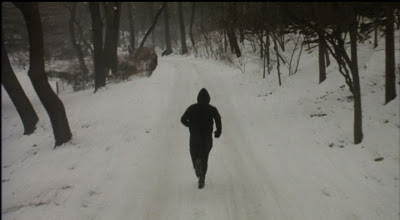
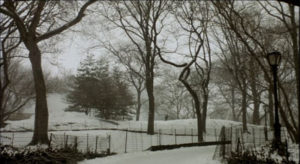
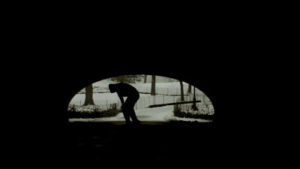
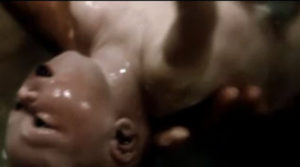
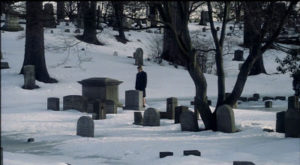
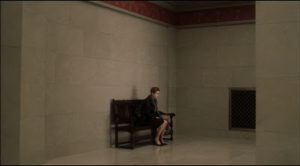
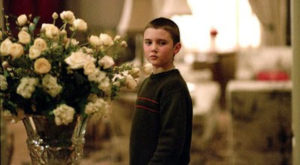

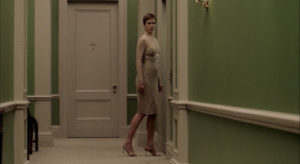
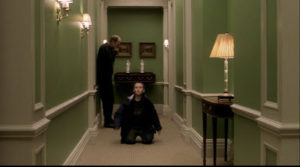
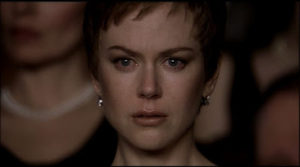
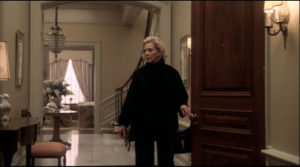
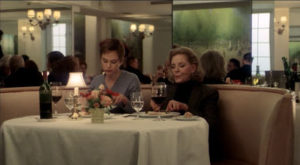
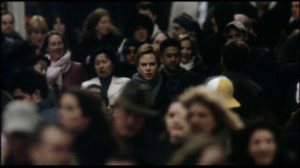
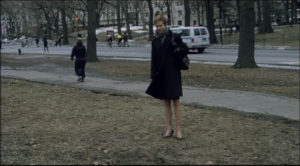
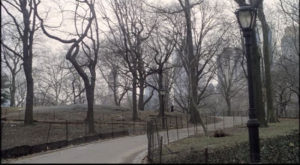
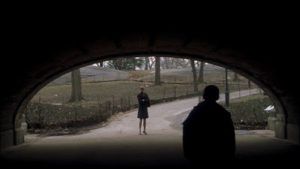
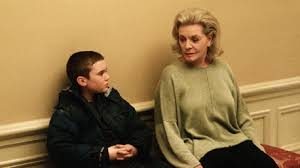
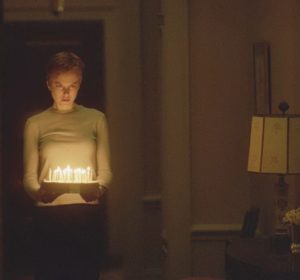
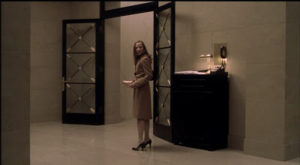
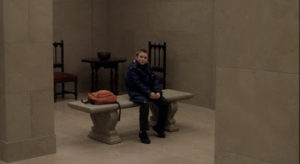
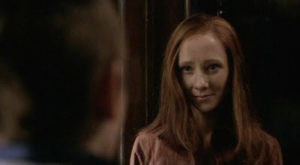
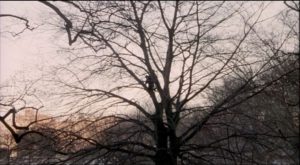
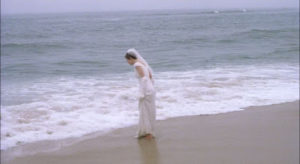
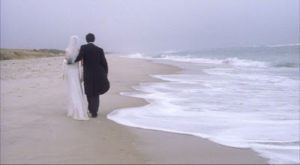
I love this film as well and really enjoyed your commentary on not just the film, but grief. I know it’s been a few years since you’re husband passed away and I hope you are finding peace. Thanks for the insightful article on what is often a misunderstood film.
Stunning piece, thank you. The Rilke quote is also breathtaking.
What a beautiful analysis. Thank you. I am so sorry about your husband.
Than you so much for this beautiful commentary on the film Birth. I saw Birth more than a few times and I’m still fascinated by it. I think Birth is a perfect example of a rare film that delves into the beauty and mystery of the unknown.
It is so true that the death of someone we love very much can for the 1st time in our lives, can cause us to question all we thought we knew about death, God, creation & what it IS to live & to die; because that LOVE is so strong thatthe yearning to know the loved one goes on somewhere, somehow will slap you out of your own ego. The pain forces you to see what 3D hides from our human eyes.
Thank you for your beautiful & insightful comments on this movie. Like you I have been in my life overwhelmed with grief and loss. And then the grand all consuming fear of aloneness. Birth for me was a masterpiece that I am still trying to process fully. It’s interesting you compared it to Hitchcock’s Vertigo. And then when I thought about it …I instantly understood why. La Jetee too